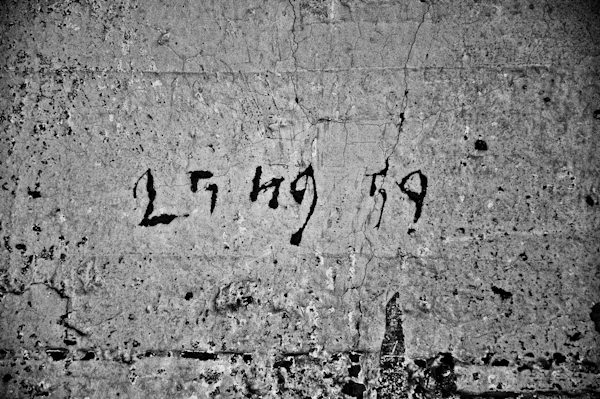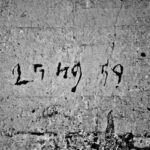In today’s hyperconnected digital landscape, a seemingly cryptic identifier like 185.63.253.2pp can raise questions, spark curiosity, and—sometimes—cause concern. Is it an IP address? A server location? A scam? Or something entirely different? As more people encounter strings like this online—whether in server logs, emails, or suspicious website redirects—understanding what they represent becomes increasingly important.
In this guide, we’ll break down everything you need to know about 185.63.253.2pp, from its structure and potential meaning to cybersecurity implications, how to trace it, and what you should do if you encounter it.
1. What Is 185.63.253.2pp?
At first glance, 185.63.253.2pp looks like an IP address, but it contains an irregular suffix: 2pp. A standard IPv4 address consists of four octets (e.g., 185.63.253.2) without any trailing letters or extra segments.
The presence of “2pp” suggests this might be:
-
A domain name with an IP-like structure (e.g., 185.63.253.2pp.com)
-
A spoofed address or alias used in malware or phishing
-
A misformatted IP address
-
A placeholder or internal routing identifier
Thus, while 185.63.253.2 is a legitimate IP address structure, the .2pp addition raises red flags and indicates non-standard use, possibly within custom systems or for malicious obfuscation.
2. Understanding IP Addresses vs. Domains
Before diving deeper into 185.63.253.2pp, let’s clarify the difference between IP addresses and domain names:
| Element | IP Address | Domain Name |
|---|---|---|
| Format | Numbers only (e.g., 185.63.253.2) | Alphanumeric with TLD (e.g., google.com) |
| Use | Identifies a device/network | Maps to IP via DNS |
| Visibility | Often seen in technical logs | Used in browser URLs |
The suspicious-looking “2pp” part is not valid in IPv4 format, which implies that 185.63.253.2pp is not a true IP address but potentially:
-
A fake URL
-
A malicious redirector
-
A typographical error
3. Possible Interpretations of 185.63.253.2pp
✅ Legitimate Custom Identifier
Some companies use pseudo-IP addresses or internal tags like this in network testing environments, proprietary databases, or IoT systems.
⚠️ Suspicious or Malicious Domain
Cybercriminals often use IP-like domain names to fool users into trusting malicious links. This can be especially dangerous in:
-
Phishing emails
-
Fake login pages
-
Malware distribution
🧪 Obfuscated Tracking Link
Marketers or shady ad networks may use similar patterns to track behavior while disguising the destination of a link.
❌ DNS Spoofing / Typosquatting
Attackers create domains that mimic real IPs to intercept data or confuse users—a tactic known as typosquatting.
4. Is 185.63.253.2pp Safe?
Without further context, you should treat 185.63.253.2pp as suspicious. Here’s why:
-
Non-standard IP structure
-
Possibility of malware or phishing if used in email or web links
-
Not recognized by legitimate DNS services
-
No evidence of ownership in public WHOIS databases
Always verify such identifiers through safe tools before clicking or engaging.
5. How to Investigate 185.63.253.2pp
If you’ve encountered this identifier in an email, file, or web redirect, follow these steps:
✅ Step 1: Use WHOIS Lookup
Search the domain (if it’s a domain) using a WHOIS lookup tool. It will show:
-
Owner details
-
Hosting provider
-
Country of origin
-
Domain creation date
If the details are hidden or suspicious, that’s a red flag.
✅ Step 2: Run VirusTotal Scan
Paste the URL or domain into VirusTotal.com to scan it against dozens of antivirus engines.
✅ Step 3: Check DNS Records
Use tools like MXToolbox or Nslookup to examine DNS entries related to the domain. Missing or malformed entries may indicate fake setups.
✅ Step 4: Use Reverse IP Lookup
Services like IPinfo.io or Shodan.io let you inspect what services are running on a given IP. You can detect:
-
Open ports
-
Server banners
-
Past misuse history
6. Common Threats Linked to Suspicious IP-like Domains
When identifiers like 185.63.253.2pp are linked to malicious activity, they are often part of:
⚠️ Phishing Campaigns
You might get an email with a fake login link disguised to look like an IP. These links steal credentials.
⚠️ Malware Downloads
A drive-by download may start automatically from such a site if clicked.
⚠️ Crypto Scams / Fake Tech Support
Imitating legitimate-looking URLs, attackers may convince users to share personal info or call fake support numbers.
⚠️ Botnets and DDoS Activity
IP strings are sometimes embedded in malware that connects infected devices to command-and-control servers.
7. What to Do If You Clicked on 185.63.253.2pp
If you clicked on a link resembling 185.63.253.2pp, take these immediate steps:
-
Disconnect from the internet to prevent outgoing communication from malware.
-
Run a full antivirus and anti-malware scan.
-
Change your passwords—especially if you entered credentials on the page.
-
Check for unauthorized logins in your email, social media, or banking apps.
-
Clear browser cache and cookies to remove tracking elements.
-
Monitor system behavior for unusual activity.
8. How to Protect Yourself from Similar Threats
🔐 Use Trusted Antivirus Software
Always have real-time protection enabled on your devices.
📩 Be Cautious with Email Links
If you see a domain or address like 185.63.253.2pp, never click it without checking its legitimacy.
🌐 Install a Browser Extension for Link Inspection
Tools like Web of Trust (WOT) or uBlock Origin help flag dangerous URLs.
🔍 Look Closely at URLs
Real sites will never use confusing, IP-like domains with suffixes. Always verify spelling and structure.
9. What Makes 185.63.253.2pp Stand Out?
This identifier draws attention because of its disguised familiarity. It mimics the format of a regular IP, which:
-
Builds false trust
-
Avoids some spam filters
-
Tricks non-technical users
This clever masking technique is a social engineering tactic, not just a technical one. That’s why awareness is key.
10. Final Thoughts: Stay Informed, Stay Safe
While 185.63.253.2pp may look like just another internet string, it represents a growing trend in digital deception and obfuscation. Whether it’s a malicious redirect, spoofed domain, or internal tag, identifiers like these demand scrutiny.






